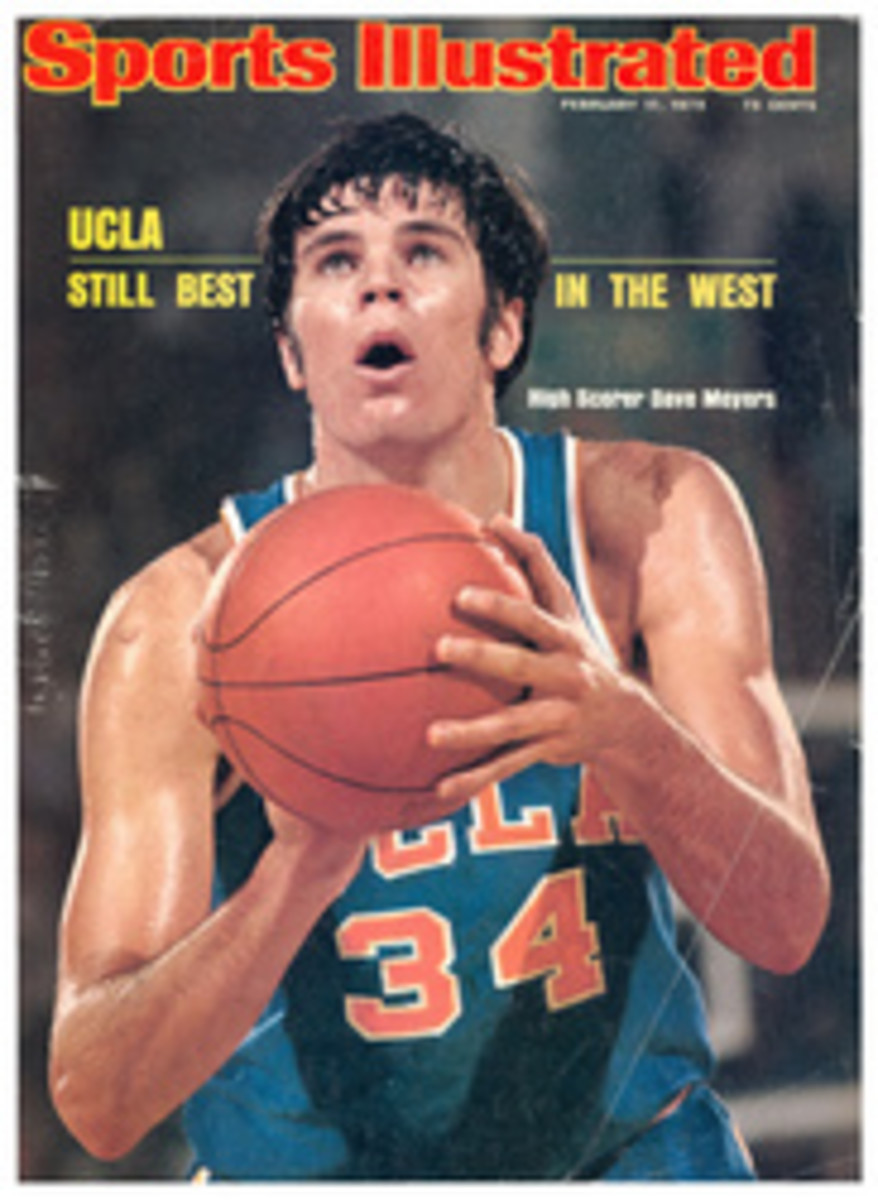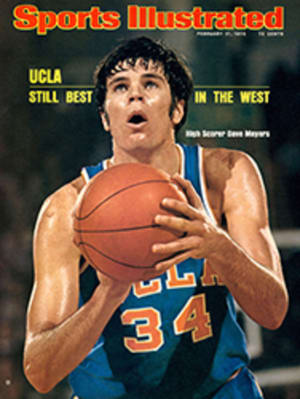
SCORECARD
POSTSEASON POTPOURRI
Football, to paraphrase the old saying, will be a great game if they ever finish inventing it. That day, judging by the newspapers and SPORTS ILLUSTRATED mail of recent weeks, is not close at hand. Here from a veritable freshet of suggestions for improving the sport are a few that seem particularly cogent.
Bowl Games: Two plans have been offered to retain the bowls and have a playoff for the national championship, too. The Reverend Edmund P. Joyce of Notre Dame would first have a playoff, then bring on the bowls. Reader Jerry Miller of Pasadena proposes that the bowl season continue as usual but that the NCAA, perhaps in conjunction with the wire services, then select the two most impressive winners for a playoff two weeks after the last bowl game. Opinion: Penn State will still go home angry.
Two-Platoon: Reader David R. Schryer of Newport News, Va. suggests that the colleges continue using two platoons but reduce the number of athletes recruited, say from 30 new scholarships each year to 15 or 20, which should be quite adequate. Opinion: Financial difficulties will force the colleges to this or a similar solution.
Ho-Hum Finishes: Joseph Brinton III of Howard Beach, N.Y. thinks that during the last two minutes of a game the clock should stop after every play—no time-outs, no stalling, no hasty calling of plays, no shenanigans with the clock, no dismal spectacle of a game ending while players unpile. Opinion: Overdue.
Outsized Coaching Staffs: Eddie Sutton, basketball coach at the University of Arkansas, would like to see coaches doubling up, with basketball assistants helping the football staff and vice versa. Opinion: It worked before, it could again.
Turning on the Off-ense: The Los Angeles Times would have all defenders within five yards of the line of scrimmage come to a set when the offense does. The only player permitted to move after that would be the one covering a man in motion. Opinion: Worth a serious try, if more offense is the goal. Certainly blocking would be improved.
Protecting the Quarterback: Apply the rules used for punters, again an L.A. Times idea. Defenders would get 15 yards for intentional roughing, five yards for unintentional. Opinion: By all means. At the present rate of attrition there will be no quarterbacks left in another season or two.
Spearing: Outlaw it, says the American Medical Association. Football's most serious injuries occur when a blocker or tackler uses his head as a battering ram. Opinion: The inventor of spearing should have been treated by the AMA long ago.
Spiking: Outlaw it, too, says reader Will Peterson of Kirkland, Wash. It is no more than a taunt, says Peterson, and as such poor sportsmanship. He sees a lowering of standards in all sport and believes, "The larger question of sports ethics could perhaps be improved if all physical education majors were required to take a course in sports ethics as a prerequisite for graduation." Opinion: Amen.
ACORN IN CHEEK
One result of conservationists' successful campaign to require developers using federal funds to look before they leap has been a blizzard of forms and papers in quadruplicate describing the expected environmental impact of any proposed project. Recently Washington and Lee University, seeking government backing for a new library, filed the following response to a request for an estimate of the building's probable effect on the physiology, behavior patterns and/or activities of any animal population making use of the site. It is a model of brevity:
"There are some 10 to 20 common squirrels living, or appearing to live, in the site proposed for the new library. Some trees that now provide either homes or exercise areas for the squirrels will be removed, but there appear to be ample other trees to serve either or both of these purposes. No major food source for the squirrels will be affected. The squirrels have had no apparent difficulty in adjusting to relocations brought about by prior non-federally supported projects. It is, however, difficult to ascertain if they will be unhappy about having to adjust to other trees in which to live and sport about."
SHORT STORY
In Philadelphia for an indoor track meet last weekend, Sprinter Steve Riddick of the Philadelphia Pioneers raised eyebrows by running—and winning—his heat in the 60-yard dash without removing his sweat pants. New style? Super cool? Super psych? "No," Riddick explained, "I left my shorts at the hotel and didn't realize it until I had warmed up." Riddick won the final in a breeze—and in borrowed shorts.
UP PERISCOPE
All you underwater Monopoly players stop right where you are and surface. To prevent physical harm, the Monopoly Marathon Records Documentation Committee will no longer accept attempts at duration records for submerged play. Permanent possession of the individual mark goes to Bob Evans of Texarkana, Texas, who swapped waterlogged real estate for 20 hours and 10 minutes last November, and the team standard belongs forevermore with Tim Guinee and Scott Bertram of Peabody, Mass. Last month they endured for 17 hours and 17 minutes.
So where does this leave the fine art of wrinkle-finger Monopoly? In the bathtub. The MMRDC sanctioned a record set in Germany by Sp. 4 and Mrs. Thomas E. McDowell for a 14-hour game, and will entertain challenges. And where does this leave the practice of publicity? Healthy.
LEERY ON THE LINKS
If Johnny Miller is one light practicer, Lee Trevino is one heavy skeptic, and that fast start of the new year has done nothing to allay his suspicions.
Miller has said he hits 10, maybe 15 balls before and after each round, no more. He reported that during a two-month layoff this winter he played only one 18-hole round, fished a lot and spent most of his time idling.
Trevino, who as a young man on the make conducted a fairly serious study of such claims, wonders. "Heck, man," he told the Houston Post's Jack Agness, "I'm no good at all unless I hit 300 balls a day. You may not see me at the tournament, because I practice at a different course. I'll tell the guys I haven't picked up a stick in weeks, but that's a bunch of bull. I'd go nuts at home if I didn't hit balls. My wife'll catch me going through closets and say, 'Honey, it's time for you to get back on the course.' "
HUES AND TRIES
Color and sport, in the popular mind, seem always to have lived together, if not in wedded bliss at least by common-law consent. And yet, with the exception of racing silks, it is only lately that the relationship has become an easy one. The explosion is on now, though, and it probably is only a matter of time until Alexander Calder is invited to put his Braniff airplanes aside and devote his talent to, say, dressing up the 16-pound shot.
As proof of this we have the hot-pink-and-white basketball (SI, Feb. 3) that women professionals hope to be passing around for money next year, and the North American Soccer League's newly designed ball with a red star on blue (the black pentagon that appeared at regular intervals on the old ball) against a white background (the rest of the ball).
But credit for the really innovative use of color will go to the World Football League, if it is not too groggy from last season's beating to come out for round two. The WFL proposes to outfit players with different-colored pants according to position. All linebackers, for instance, will wear red pants, running backs green, wide receivers orange, defensive backs yellow, interior linemen white, quarterbacks a checkered pattern, to match their careers no doubt.
The idea is to enlarge the world of strategy for the average fan. No longer will TV watchers have to wait for Al DeRogatis to explain that their team succeeded in isolating a running back on a linebacker. Once they catch on, they will see that a man in red pants is trailing a man in green pants. They will spot a safety blitz in progress or detect a lineman overhauling a flanker downfield.
It sounds awful but maybe it's worth a try. We suspect that many viewers fail to catch the niceties of the game that rocket color men into a blaze of adjectives.
THE CATTER CUP
Feeling the man in the street should have an opportunity to determine his best athlete, Dallas businessman Sam L. Catter proposes a Superstars competition with the following events: For bartenders—shotput. For chiropractors—discus throw. For taxpayers—the 1040 high hurdles. For attorneys—a field event, construction of the lien-to, using old chattel mortgages. For the media, two events—hurling barbed remarks and the standing leap to a conclusion. For doctors—a needlepoint competition, or something in that vein. Suture self. And in reverse—Pole vaulting. Limited to Russians.
BATTLE OF LENINGRAD
Sometimes the worst laid plans have a way of coming out, well, worst. Chuck Forrester, a used-car dealer from Greensboro, N.C. who helped put together a tour of 252 college students to the Soviet Union, would buy that.
His troubles began when he decided that since 26 of those on the trip liked to play basketball, he would arrange a friendly game in the interest of international goodwill. He wrote to the Russian Friendship Council and requested, among other things, international rules and referees. Forrester heard nothing more until the tour hit Leningrad, when he learned he would get everything he asked for—and more.
A game would be played the following afternoon, he was told by the chief of the local Institute of Physical Culture. "You're North Carolina State?" said the functionary. "David Thompson and Monte Towe?" Uh, no. "Then you are North Carolina with Mitch Kupchak and Walter Davis?" Not exactly, said Coach Forrester. Too bad. Several thousand spectators were on hand when Forrester and his scraggly band walked into the institute gym next day to face a Russian national team featuring two Olympians. "We looked at those guys and I'll tell you right now," he says, "I know what Little Big Horn looked like to Custer." Only three of his men even had basketball shoes. They were allowed to match pairs from a pile—almost like an offering—and then the sacrifice began.
By halftime the score was 55-19 and would have been worse had the Soviet coach not taken pity and lifted his starters. But the North Carolinians rallied in the fourth quarter, and it was Sonia, bar the door. In came the varsity to mop up. Final score of the historic non-event was 92-41.
Not all was lost, Forrester reports. "We had a boy on our roster named Thompson, a young white fellow, six feet. All the fans wanted to pose for a photo with Thompson."
BETTING ON THE COME
The time had arrived, thought officials of the Corinthians and S√£o Paulo soccer clubs, to invest in the future. They offered Edson Cholbe Nascimento hard currency for his signature, but for a reason in this age of mercenary athletes that can only be considered singular, the boy's father refused to agree to terms. He feared the clubs would be cheated.
"I am not sure he will take an interest in the game," said the father, which is a point; the boy is only four. The other point is that the father is Pelé.
ILLUSTRATION
THEY SAID IT
•Bob Wolf, agent, on the new trend in sports: "These days it's not as important to know the difference between a Veer offense and a Wishbone as to know the difference between a preliminary hearing and a temporary injunction."
•Mark Donohue, explaining why he does 300 push-ups a day and special neck exercises to keep his 37-year-old body looking younger: "All I'm racing against in Formula I are 25-year-old slingshot Kamikazes."

